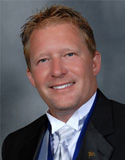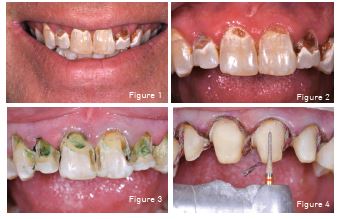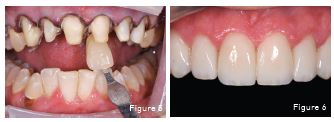
Dr. Jack Griffin
Sometimes we must look beyond the teeth. We often get so focused on our dental view that occlusion, aesthetics, and preps may prevent us from seeing the person behind the teeth. Don’t underestimate your importance in the overall health of the patient. When we see decay or failed restorations we must try to find out the cause if we want long lasting success. Sometimes asking the patient “Can you help me?” can lead to the restoration of the individual and not just the teeth. “Can you help me figure out why you are getting this large amount of decay?” “Can you help me determine why your fillings keep breaking?” “Can you help me find out why your teeth are so worn?”
When we ask these questions, we are looking for habits that should be addressed before restorative work is done. In fact, our differential diagnosis when seeing rampant decay, prematurely failing restorations, or oral damage that is beyond the norm should include the use of drugs. We may even be the step needed to save a life.
Restoration of the person
The dental staff is not here to judge, condemn, or criticize. We first must have a concern for the overall well-being of the patient. There is no reason to have a great looking restored smile if the inner being is still decayed. We may be the first health care provider with whom the patient has talked about their issues.
What do you do if a patient actually says “I’ve had some issues with medications…”? In a caring way we simply say “thank you for sharing the information with us, here’s the card of someone we work with to make sure our restorations last as long as possible.” We recommend that each office has business cards
or referral slips of someone in your area who is a therapist, counselor, or group who deals with substance abuse. We are providing an avenue for help.
Again, don’t be surprised, if your tone and sincerity are right patients will often open up to you. You may save a life.
Restoration of the teeth
After therapy and the patient is drug-free for at least a year, we will begin aesthetic treatment. The plan, in this case, was for lithium disilicate crowns from #5 to #12 with regenerative fillings in all other teeth until definitive restorations could be placed. (Fig 1)
Effects of long-term chemical use often include red, inflamed gingiva, tooth wear, and decay. (Fig 2) After periodontal therapy, decay removal was done and evaluated with caries indicator (Sable Seek, Ultradent). (Fig 3) Buildups were done with a regenerative material (Activa Restorative, Pulpdent) and prepared for full coverage lithium disilicate restorations. (Fig 4) A preparation shade was taken with moist teeth and the shade tab on the same plane as the teeth to allow the ceramist to choose opacity needed. (Fig 5)
I mpressions, alignment guides, and preparation shades are all taken and sent to the lab along with a full series of photos and the goals the patient wants from treatment. After temporization for 3 weeks, the restorations were bonded into place with a universal adhesive and dual cure giomer resin cement (BeautiCem, Shofu).
mpressions, alignment guides, and preparation shades are all taken and sent to the lab along with a full series of photos and the goals the patient wants from treatment. After temporization for 3 weeks, the restorations were bonded into place with a universal adhesive and dual cure giomer resin cement (BeautiCem, Shofu).
Post op instructions
An impression was taken and a bleach-type tray extending 2 mm onto the gum tissue was made. The instructions were for the patient to place a remineralization-fluoride paste into the tray (ReminPro, Voco) in an amount similar to bleach, and sleep with the tray 2 times per week. The purpose is the re-charging of the giomer cement and along with brushing with the material at least once a day can “re-charge” the luting material to have a more continued release of fluoride.
After six days the patient returned for a post op visit and the obvious improvement in hard and soft tissue was observed. (Fig 6) The patient was reassured and given praise for the commitment to their overall health and encouraged to continue with our re-care program. We stress the importance of diet and hygiene with the recovered patients while being very positive with them. (Fig 7)
The real value
We must not undervalue the potential effect we may have on a patient’s life. Look at your team as important health care providers and with the right questions and treatment, you may change a life. You might even save one.
If you have questions about my article or if you would like to send a case, please contact the Pacific Aesthetic Laboratory Group at www.pacificaestheticdentalstudio.com, Gary Vaughn, CDT, CTO
(916) 786-6740, or via email gvaughn@thePAC.org.
